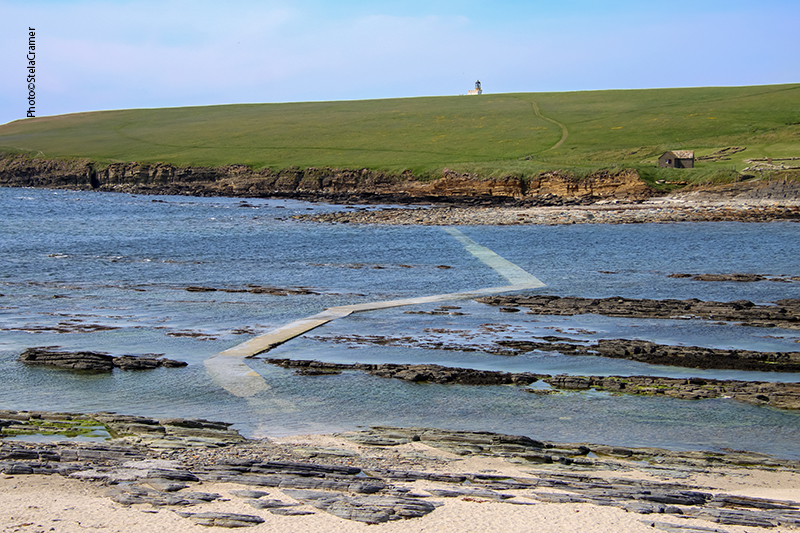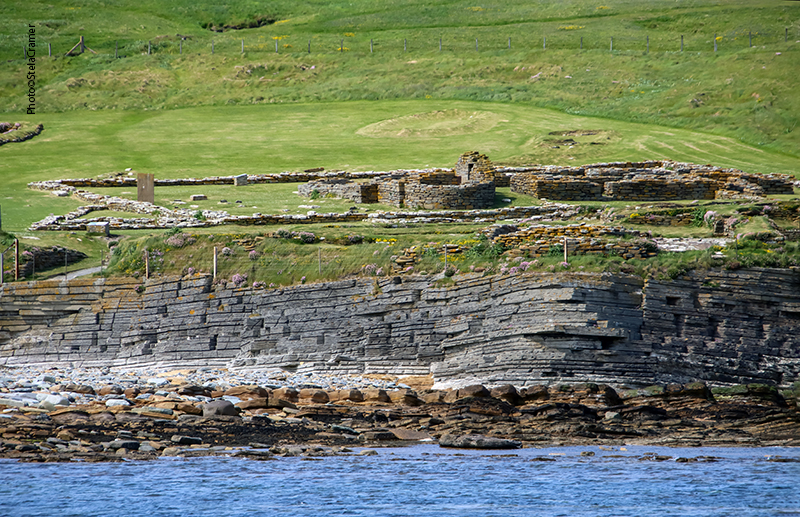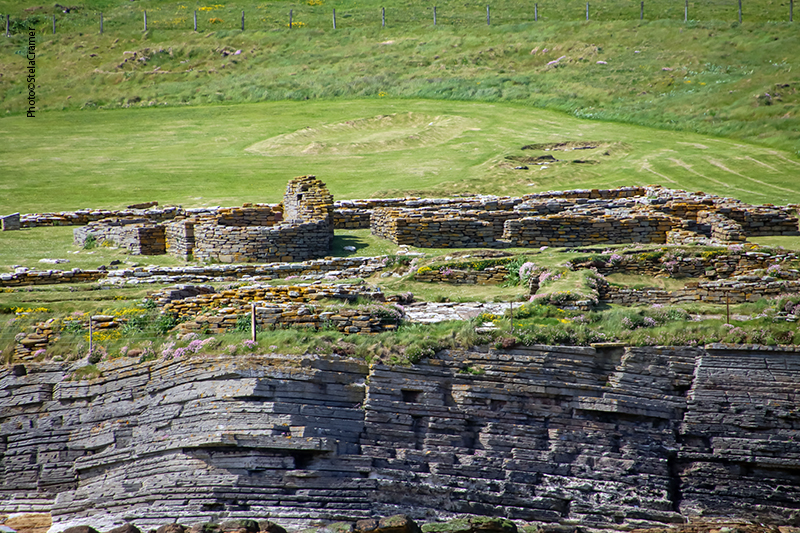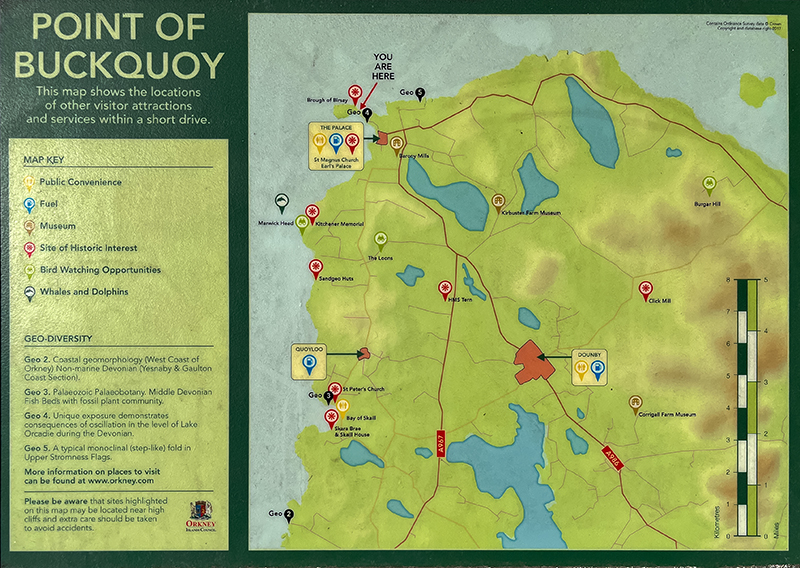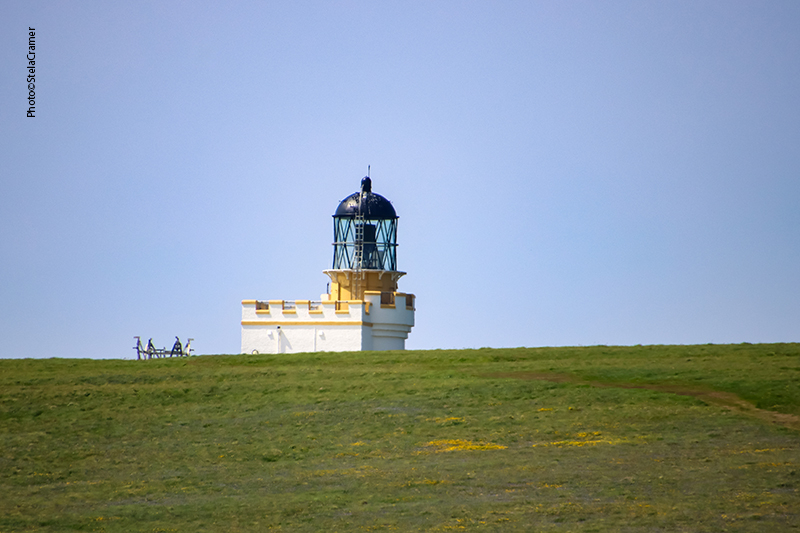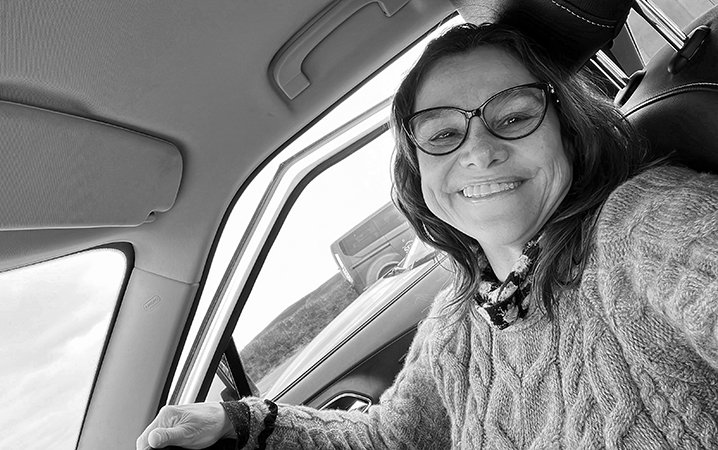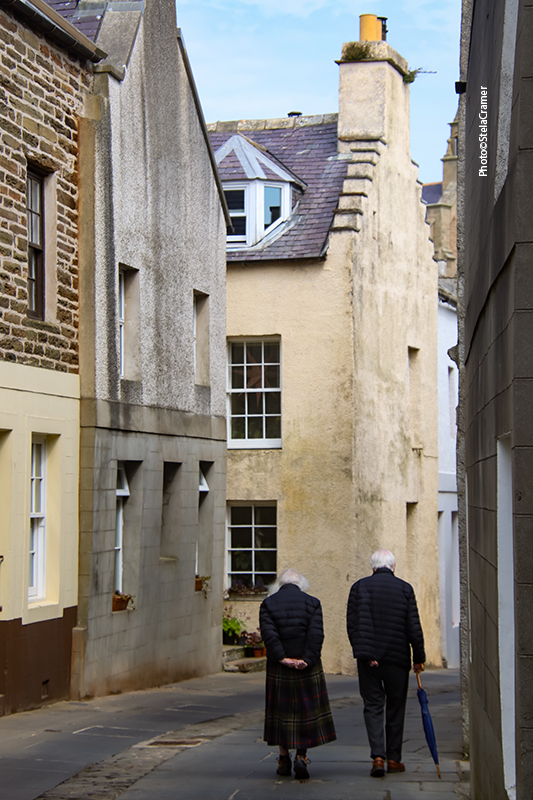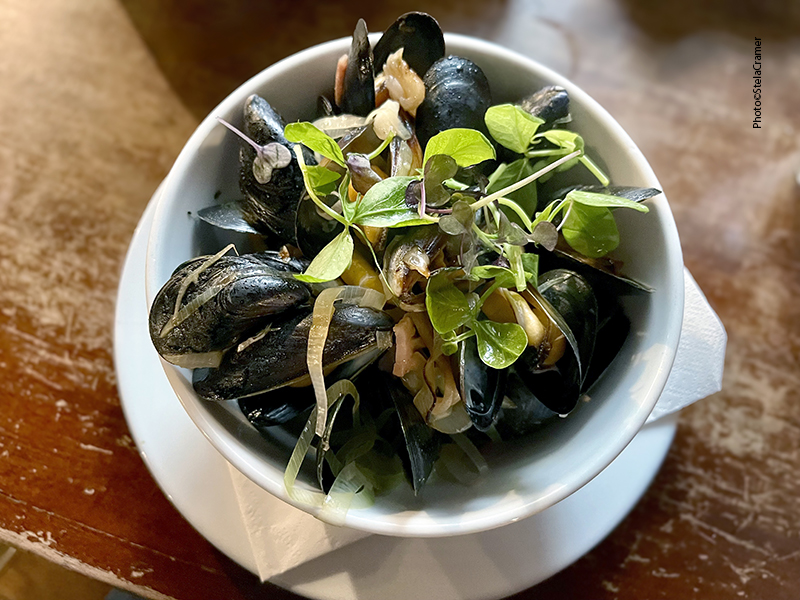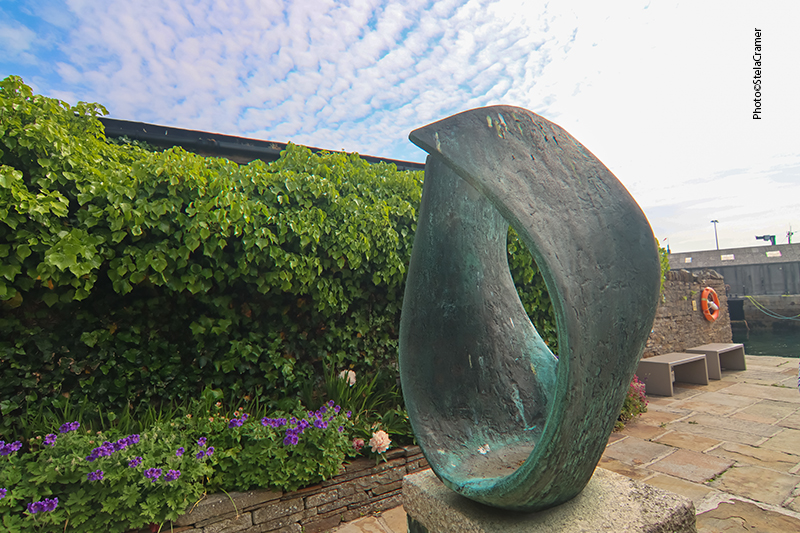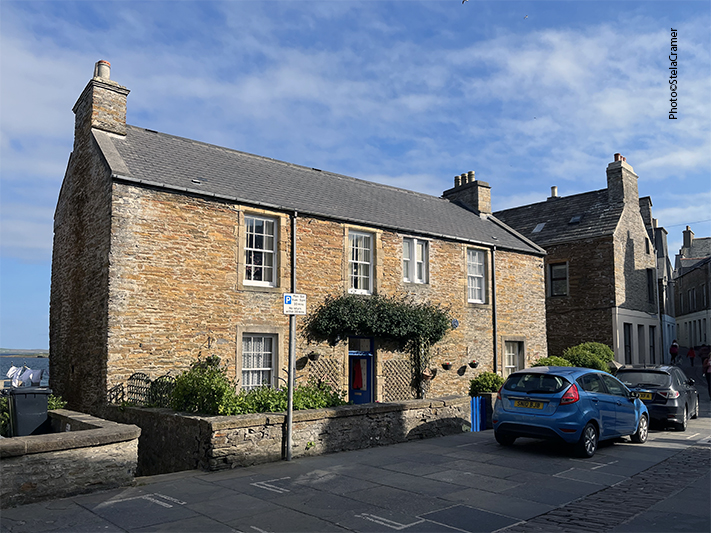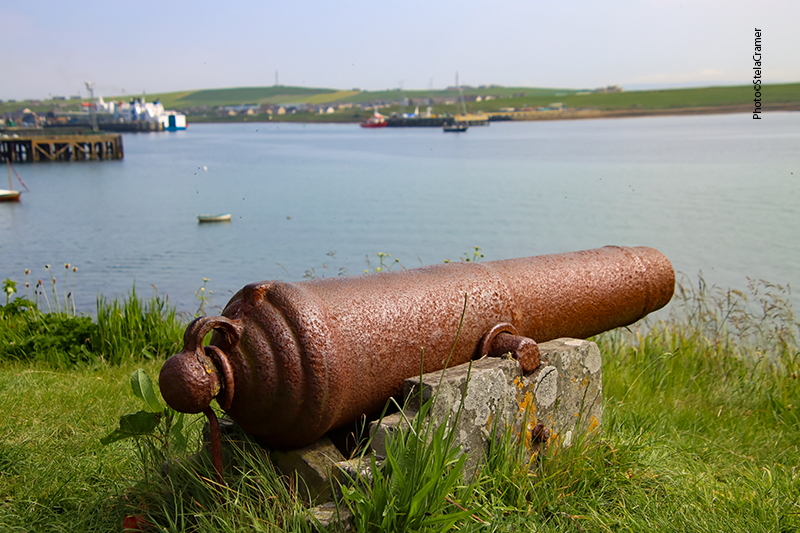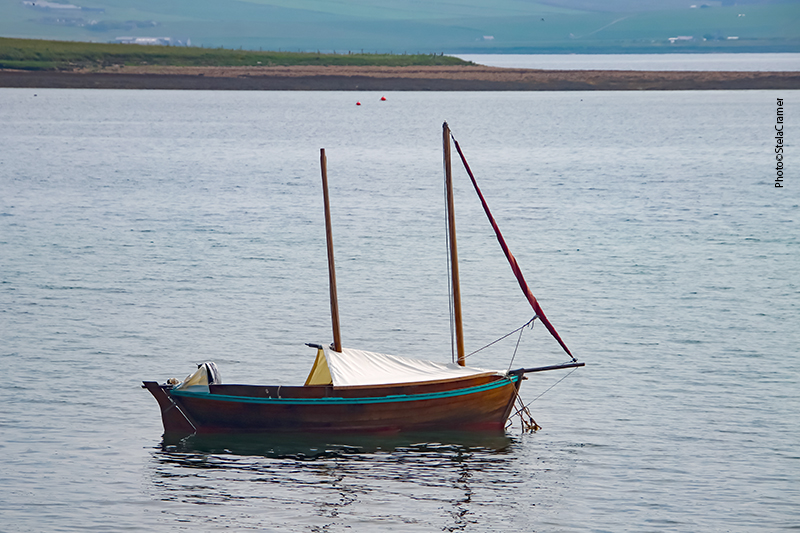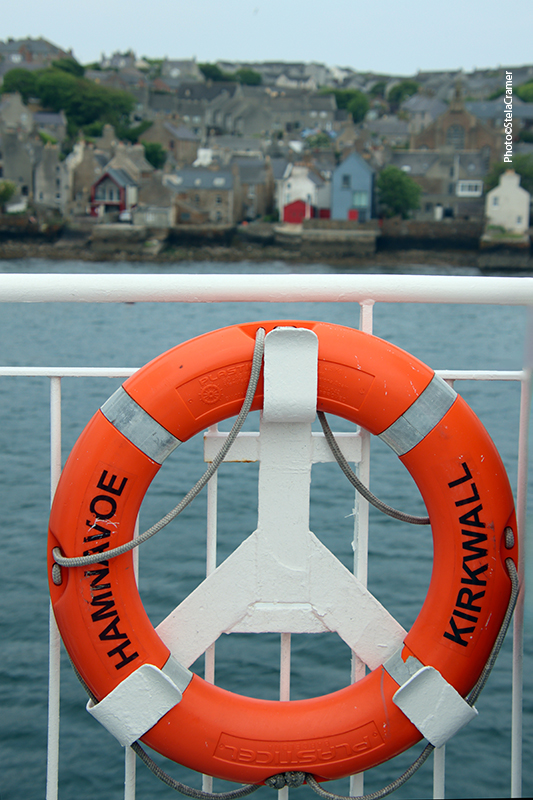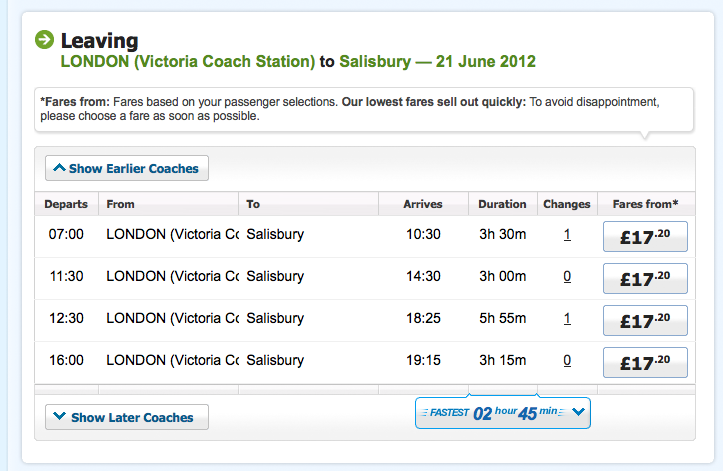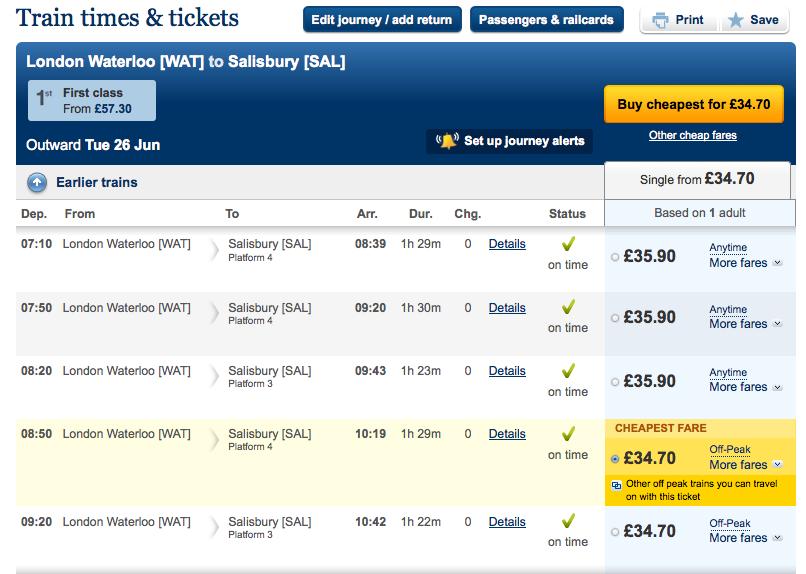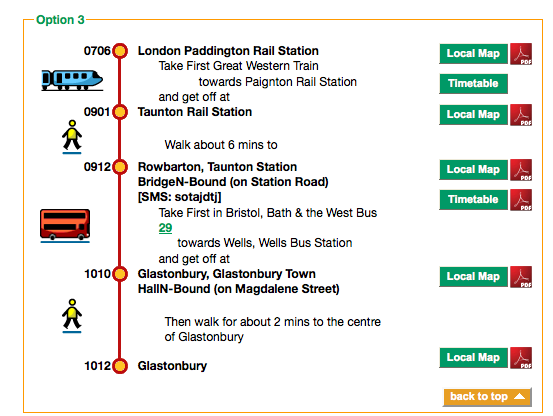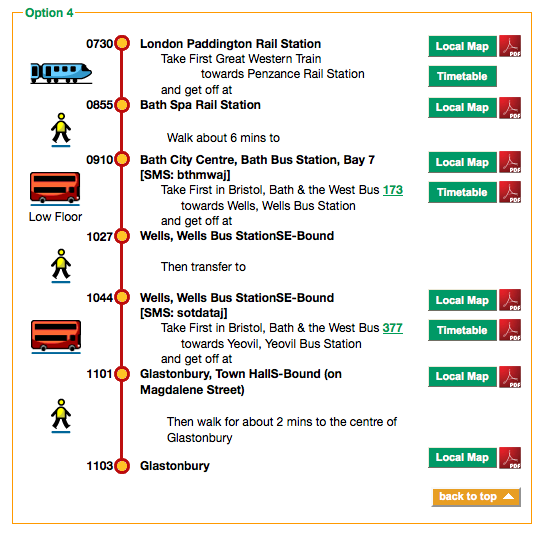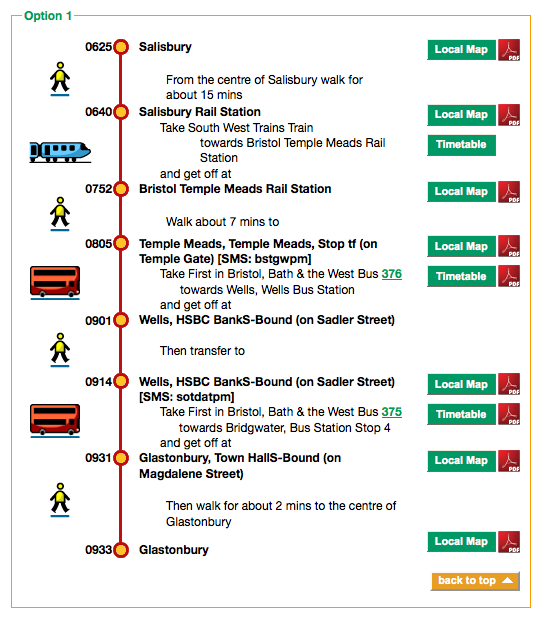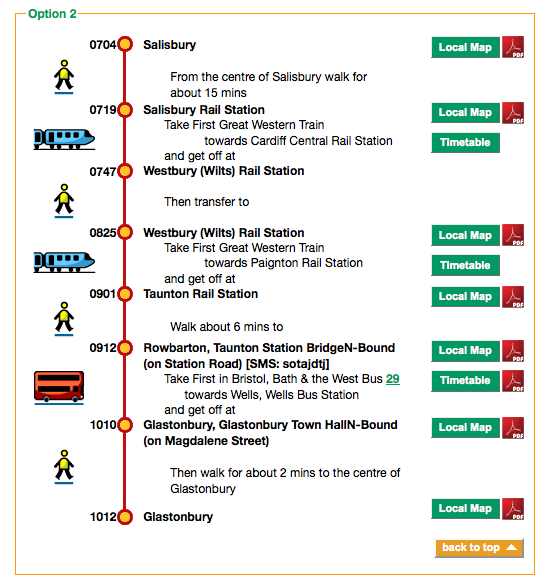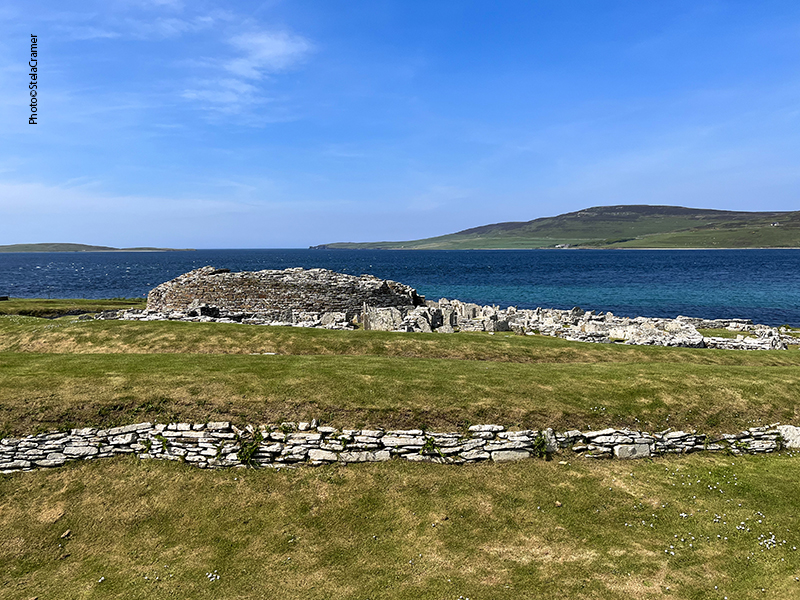
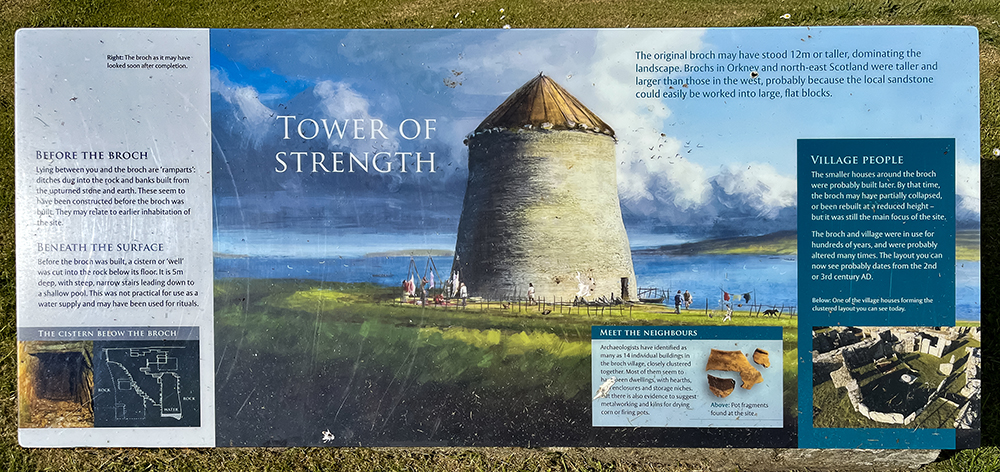

Brochs são construções redondas encontradas apenas na Escócia. Há mais de 500 deles, a maioria nas ilhas e nas Terras Altas. Alguns existem sozinhos, mas nas Orkneys a maioria aparece cercada por aldeias de tamanho razoável. Um dos exemplos mais impressionantes, e o mais bem preservado, é o de Gurness.
Brochs are roundhouse buildings unique to Scotland. There are more than 500 of them, mostly in the northern and western Highlands and the islands. Many stood alone, but sizeable villages often surrounded those in Orkney. The broch village at Gurness is one of the most impressive and the best-preserved examples.

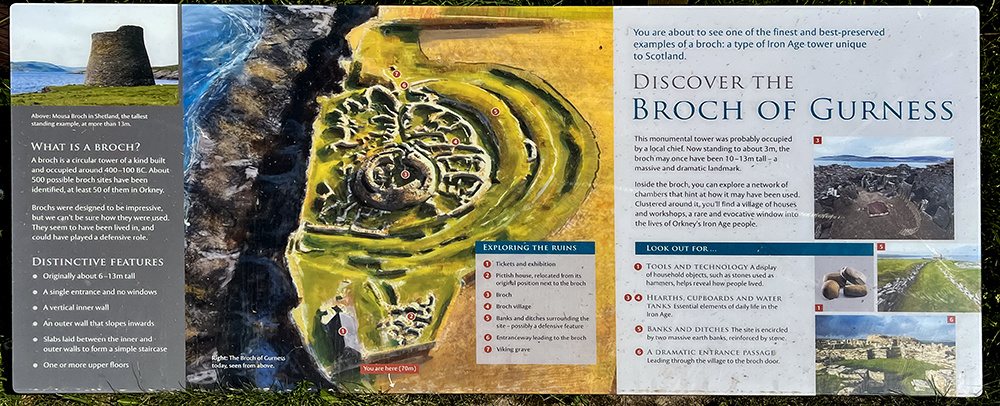

O Broch de Gurness tem cerca de 2000 anos. Construído no Neolítico, em algum momento depois de 100 A.C. parece ter sido abandonado e os fossos preenchidos. A aldeia em volta continuou existindo até cerca de 5 A.C., o chamado Período dos Pictos. Depois, construções Vikings ocuparam parte do lugar. Essa mesma sequência de ocupação se repete nos Brochs próximos, em Birsay e em Midhowe, este na Ilha de Rousay, que se vê ao fundo, na foto. Devia haver conexão entre os habitantes desses lugares. Imagino que, há milênios atrás, o nível do mar devia ser bem mais baixo e se pudesse atravessar a pé durante a maré baixa.
The Broch of Gurness is around 2000-years-old. Built by Neolithic people, at some point after 100 AD the broch was apparently abandoned and the ditches filled in. The settlement around it continued into the 5th century AD, the period known as Pictish times. Subsequently, Viking buildings occupied part of the site. This same sequence of occupation is seen in the nearby Brochs, Birsay and Midhowe, this last one in Rousay, the island seen in the background, in the picture above. There must have been connection between all these inhabitants. I guess that centuries ago the sea level was lower and people could cross on foot in the ebb.
O Broch original tinha uma lareira central; armários construídos em pedra em volta das paredes; uma espécie de banheira – provavelmente um poço – e escadarias entre as paredes levando aos andares superiores. Este layout foi alterado quando o Broch começou a cair. O poço foi preenchido e o interior redividido.
The Broch originally had a single central hearth; stone-built cupboards around the wall; a sunken water basin – probably a well – and set of stairs between the broch walls, which led to the upper floors. This layout was altered when the broch began to collapse. The well was filled in and the interior refitted with new partitions.


Escadarias que levavam ao andar superior: uma “galeria” com piso em pedra, entre as duas camadas da parede externa, de cerca de 4m de largura / The tower features two skins of drystone walls, with stone-floored galleries in between, up to 4m thick, which were accessed by these steps.
O tanque apresenta o fundo e as laterais impermeabilizados com argila. Há outros semelhantes na aldeia em volta, muitos próximos às lareiras. Isto nos leva a crer que usavam a água para cozinhar, e que podiam aquecê-la pondo pedras da lareira dentro do tanque. / The water basin sides and bottom were made watertight using local clay. Similar tanks were found in the village, many placed near the hearths. This suggests using the water for cooking, and that water could be heated using stones from the hearth.

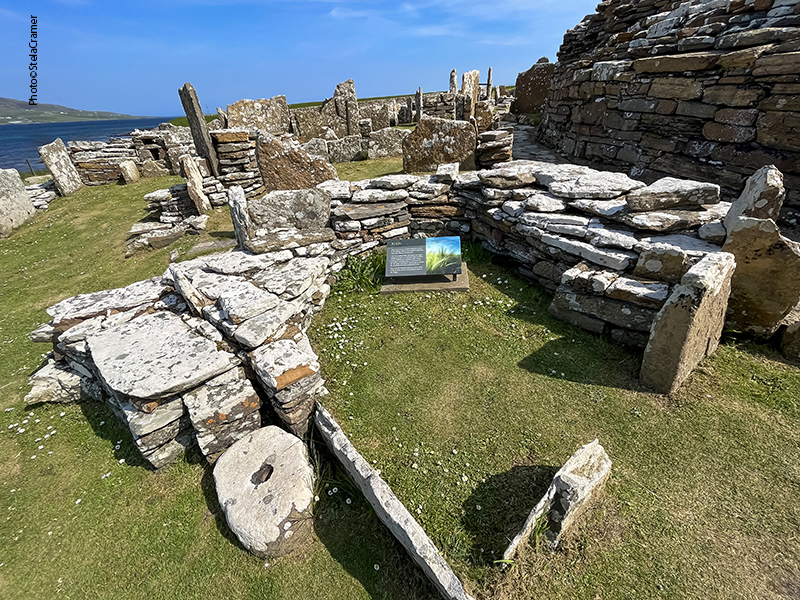
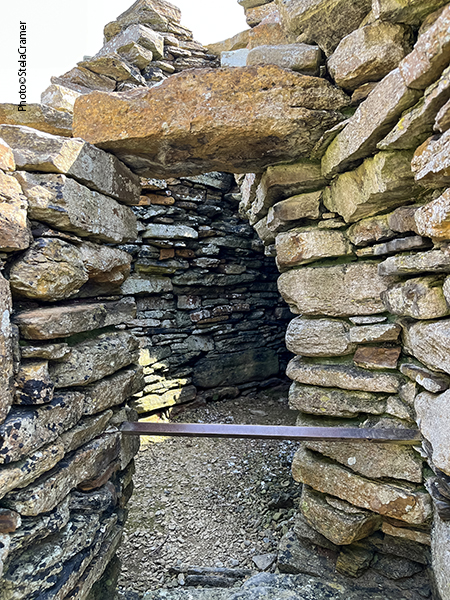
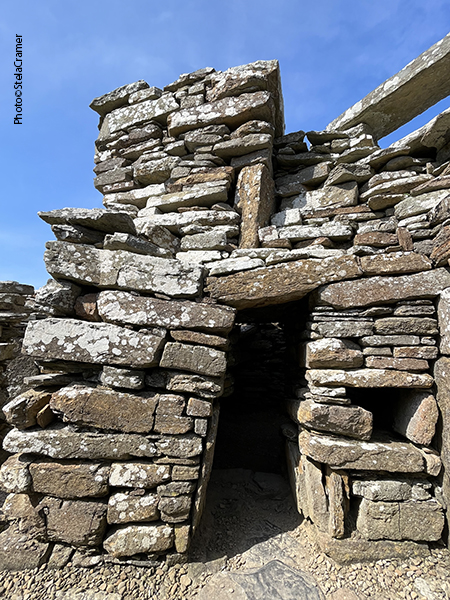
Impressionante alvenaria num labirinto de compartimentos / Impressive stone masonry in a network of chambers



In the village, each house entrance leads to a large living and sleeping room, off which were smaller side rooms. The main room had a hearth, a large tank set into the floor, cupboards and sleeping spaces divided by stone slabs.
Escavações em 1920 revelaram que o Broch foi usado e reusado, demolido e reconstruído ao longo do tempo, assim como o povoado ao redor. Ou melhor dizendo, a série de povoados que foram se sobrepondo aos anteriores ( Pictos, Norsemen, etc). Estas casas nunca foram totalmente escavadas, pois seria preciso destruir esta camada para ter acesso ao que se encontra enterrado por baixo.
Excavations in the late 1920s revealed the broch was used and reused, demolished and rebuild, over a very long period, as well as the village around it. Or rather, several small villages of houses built one on top of the other (Pict, Norse, etc). These houses have not been fully excavated, as access to some of the lower levels would require destruction of the buildings at the upper levels.

Aqui link para um vídeo tour: / Link to a video tour:
https://www.facebook.com/watch/?.mibextid=KsPBc6&rdid=eaGEcqJBYGdENiWE&v=2687884308026791








